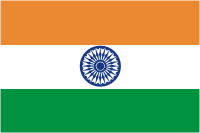Anyone who knows Jessie and I understands that we're huge fans of Indian cooking (I suppose food in general for the matter). I remember the fateful day when we began looking at the Fulbright exchange as a real possibility, and perusing the list of countries that US Teachers can go to. I won't hide the fact that we gave serious consideration to India not because of its insane diversity, warm and inviting people, magnificent cultural heritage, or astounding monuments - rather, we decided to come to India because our bellies would be perpetually filled with spicy deliciousness. India's trump card is its food - and we've rarely been let down since we arrived in August.
Did I say spicy? Chillies are like salt to south Indians - they put them in everything. And of the 28 Indian states, we have come to spicy kingdom. Menus in neighboring states have asterisks next to the words "Andhra style" - implying that the food is heavily spiced as is the custom in our home state of Andhra Pradesh.
Fellow US Teacher Paul Amstutz (he is the crazy math teacher from Yosemite, California who is currently in Bangalore with his family) once generalized Indian food as "loads of insanely spicy goo served over rice" and we have been laughing about it since. Paul's statement isn't entirely off basis, but what Indian cuisine lacks in presentation (from a western perspective) it more than compensates for in taste. The food in India, and I must admit to an inherent subjectiveness here, is undoubtedly superior to American cooking. To speak frankly, we've got nothing on these Indians. They make our food look silly. Really.
Our hosts Sudha, Virajita, and Vipanchika, as well as about every other Indian we have dined with aren't shy about telling us the truth. Fellow teachers at KVT chuckle at my peanut butter and jelly sandwiches and boxed oatmeal as they whip out delicate chapathis (flaky wheat breads that look sort of like pitas), myriad of curries adorned with just about every vegetable imaginable, or my personal favorite - masala. Ah - there is nothing on planet Earth quite like a proper masala.
Eating south Indian style involves rice - and lots of it. Typically we sit and eat with only our right hands (to offer your left hand in any matter is considered rude, to EAT with you left would be considered kind of gross) - no utensils. Eating rice with your hands does take some time to get used to, but Sudha has guided us well on these matters. To do it well involved preparing the rice by sort of kneading it with your fingertips before mixing in your dal, rasam, curry - whatever it is. This way the rice absorbs some of the flavor and becomes more easily formed into little balls that you can lift into your mouth.
Some regional dished include the incredible Hyderabadi biryani (a spicy basmati, or long grain, rice served in a small brass pot over chicken, mutton, or vegetables), haleem (a Muslim dish popular during Ramadan - wheat is mixed with mutton (with bone!) and pounded into a paste and then cooked throughout the day and served with raw vegetables), and a special bringal (eggplant) curry.
But south Indian meals don't stop at the main course - can you imagine incredible desserts without a gram of chocolate? Indians often serve sweets with the main course (OK, that part I never really got used to). They are often made with ghee (butter fats) and filled or glazed in sugar syrup (sugar cane grows in abundance in almost all regions of the subcontinent). The laddu (pronounced ladd-DOO) comes in hundreds of forms and is a favorite of Lord Ganesha (he is always pictured with one in one of his four hands) - my personal favorite is the dry fruit laddu which is customarily given for the birth of a child. Not far behind is the juicy kaja and kovapuri, as well as halwah (with cashews, almonds, carrots, you name it!).
Here is a video of a south Indian "buffet" served at our school on the occasion of a three-day regional track and field meet.
For those Americans who haven't tried Indian food - you have no idea what you're missing.


1 comment:
even I feel that Idian food is really tasty but since I had peanut butter and jelly,I'm havin it almost every alternate day...
Post a Comment